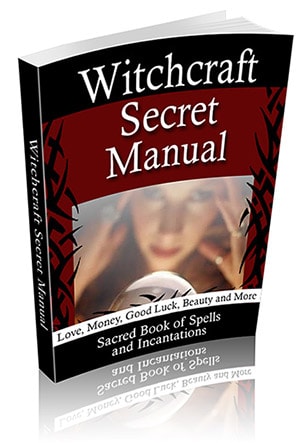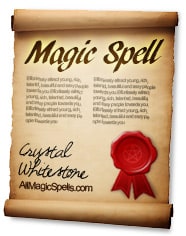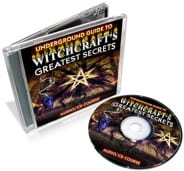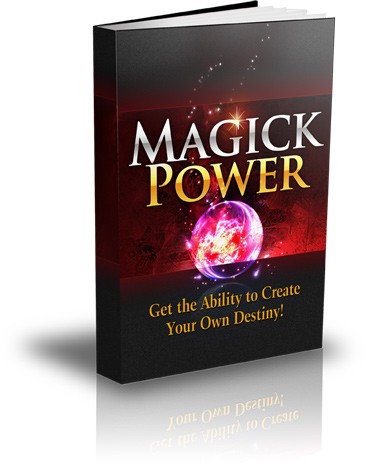Welcome back to our series on magic, magicians, and the world of illusion!
Our next piece is going to continue where we started last time, with a slightly different focus than typical performance-based magic.
It’s a type of magic similar to the focus of the last installment (Black Magic), but one with a few more nuances that necessitate its own article and focus.
It’s a community that finds its power in nature, focusing on being one with everything. The bad reputation of Witchcraft and Wicca in most cases does not come from what it really is but rather on prejudice.
I’m talking, of course, about Wicca (aka “witchcraft”).
So without further ado, let’s take a look at Wicca and Witchcraft.
As part of this article, we will also explore several online sources where Witchcraft can be learned.
Wicca: An Overview
There is more to Wicca – which is an entire organized religion – than can be fully explored here, but let’s cover the basics.
Wicca is a form of new paganism; in short, paganism is essentially a catch-all term for religions that focus on polytheism and a specific reverence for nature and one’s fellow humans (see the link for a more in-depth discussion on paganism).
>> Witchcraft Secret Manual <<
Paganism is also something of a pejorative term, as it originally was meant (again, oversimplifying a bit) as a way to “otherize” non-Christian religions back in the early days of Christianity as a way to make Christianity into a more dominant and widespread religion.
Most famously, it is widely believed that the holiday of Christmas was originally created as a way to override and envelop the holiday of Saturnia and the Winter Solstice.
Wicca, then, is a form of paganism that was established in the early 20th century in England but was popularized most notably in 1951 when Gerald Gardner, a British civil servant, and writer, made his practice of Wicca publicly known.
He was not the first practicing Wiccan; instead, he was the first prominent person to “come out” as Wiccan and bring it to a more mainstream audience.
Gardner was also the first person to write about Wicca and explain its tenets, practices, and other important information to a wider audience.
Now, of course, as people are wont to do, many of the people who read the work focused more on the dark, occult elements of Wicca and began to demonize it (no pun intended) due to the sensationalized details about dark magic and practices (indeed, Gardner did indeed draw from occultists such as Aleister Crowley, who I discuss in our previous article).
However, Wicca is more than just dark magic and witchcraft; it is a whole religion that is based around the love for one’s fellow man and woman (including acceptance of homosexuality and the LGBTQIA+ spectrum as well as open relationships) and a love and appreciation for all things natural and spiritual.
One of the popular beliefs and/or misconceptions is that Wiccans worship Satan.
This is not actually true; yes, many Wiccans believe in the powers of light and dark, good and evil, it is more about how everything works in balance with everything else in the world; yes, darkness and evil play a role in Wiccans’ lives and beliefs, but it is more in the sense that darkness exists in conjunction with the light, and that everything – light, dark, nature, spirits, etc. – should be acknowledged and respected for what they are.
One of the main symbols that have come to represent the collapsed dichotomy between Wicca and witchcraft/evil forces is the misunderstanding of the pentagram.
In modern times – specifically in sensationalized news stories, TV shows, and movies – the pentagram has come to symbolize evil, darkness, and the devil.
However, that wasn’t the original point of the pentagram; as noted in the previous link, the pentagram has traditionally been more associated with five key elements of humans or important aspects of what people should aspire to in their lives.
For instance, in Kaballah tradition, the pentagram represents “justice, mercy, wisdom, understanding, and transcendent splendor,” while in Ancient Greece it made reference to Earth, Air, Fire and Water, and Spirit (see the link for more details).
It was not originally meant to represent evil or Satanic worship, despite what contemporary society and popular culture might have you believe.
However, that is not denying that there isn’t a side of Wicca – and witchcraft – that does dabble in black magic (though remember, black magic is also associated with individualism and not just “evil”) and spellcasting. Which brings us to our next topic…
Witchcraft: What Is It? How Is It Different Than Wicca? What are Some of the Practices?
So, then, what is witchcraft?
There is certainly a slew of historical (the Salem Witch Trials) as well as popular (the sisters from Hocus Pocus, the Wicked Witch of the West from The Wizard of Oz, Sabrina the Teenage Witch from her various shows and incarnations) representation of “witches” in society.
However, in terms of “real life” and society/culture, what exactly is witchcraft and the practitioners associated with it?
One way to distinguish between Wicca and witchcraft, as noted in the link, is that Wicca is an organized religion, while witchcraft is a practice that is associated with Wicca; think, then, as Wicca as say, Catholicism, and witchcraft are practices such as confession, communion, and the like.
One of the most common and well-known practices of Wicca and witchcraft comes with the inscription of a circle that a practitioner will stand in (sometimes, this circle will contain a pentagram).
The circles are meant to serve as a portal between our physical world and the spiritual world; often, these circles will be formed in conjunction with shrines to the different elements, which may be represented by the elements of the pentagram (see the previous section).
After the ceremony including the circle begins, the priest – the person standing in the circle – will often “cut” a boundary out of the circle in order to break the barrier between the spiritual and physical world, and in so doing will invites the spirits and/or gods and goddesses that they worship into the ceremony with the priest and any followers that are present.
This is often accompanied by drums, chants, and other acts that cause the spiritual world to blend with the physical one and will “ask” the summoned spirits for help with a cause (the article in the link earlier mentions “healing a sick friend”).
Now, of course, there are some negative associations with witchcraft/Wicca and “black magic” that has an evil intention.
As noted in the article in the link provided, much of the stigmatization of witches throughout history has derived most specifically from the rise of Christianity and their need to sideline pagan traditions such as witchcraft.
Indeed, as noted in the article, most witches throughout history have traditionally been associated with healing powers (“white witches”) and helping others, but when Christianity felt like it had to harm the reputation of Wiccans/Pagans and witchcraft, the stories began to circulate more frequently with regards to “black witches” who harmed others, stole life forces, and turned people into other animals or objects.
The article also mentions that, while some Wiccans do practice dark/black magic that has the intent to harm others (curses and hexes), they only do so out of a desire to help defend themselves from those who may try to harm them.
For instance, if someone thinks that you, as a Wiccan, is trying to cast spells on everyone and steal their children and tries to continually harass or even attack you, you might be a curse on that person, not because you are “evil” and trying to harm them for no reason, but instead because if you do not your personal safety and livelihood may suffer.
Indeed, this would fall into the realm of black magic in the sense I mentioned last time: it may be harmful magic, but in the end, it is done so that an individual may prosper and survive.
Also, to address the Pentagram issue: there is, obviously, an association between the Pentagram and evil forces and/or spells.
It is true that, throughout history, that the pentagram when it is turned upside down may have some negative connotations or even powers.
There is some debate about this among the Wiccan community, though much like I’ve mentioned previously, a lot of the stigmatization over the upside-down pentagram have come from the mainstream Christian churches; this rise in persecution from Christianity was certainly not helped when people such as Anton LaVey and the Church of Satan coopted the upside-down Pentagram as their symbol, but as noted in the previous article the Church of Satan isn’t as much “evil” as it is “aggressively atheist and focused on the needs and desires of the individual rather than the community” (which, as we know, isn’t something that the mainstream Church tends to like).
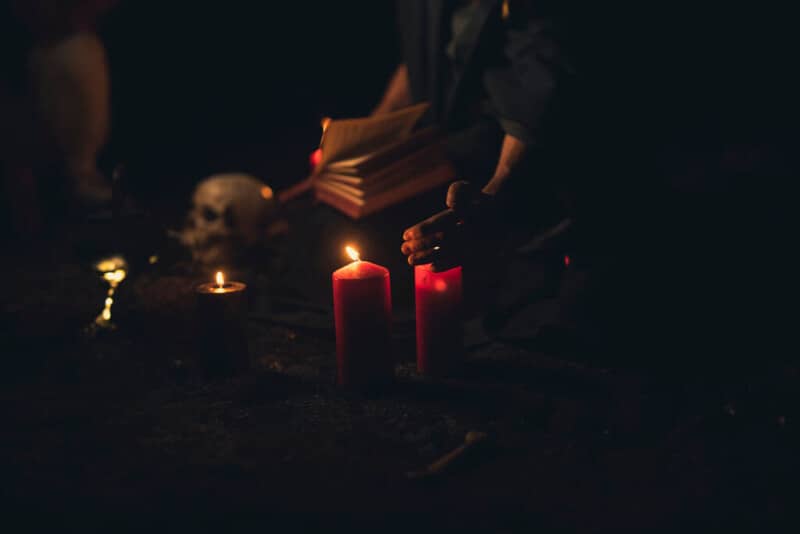
Where To Learn Witchcraft?
As part of the research I did for this article I stumbled upon several resources that are actually teaching witcraft and magic spells.
Let me share three TOP online sources that I found during my research that had the best customer reviews.
I will just briefly list them here and if this is something you’re interested in, you’ll find the details on the provided links.
TOP 5 Sources Where To Learn Witchcraft:
- Witchcraft Secret Manual
- All Magic Spells
- Simple Spell Casting
- Underground Witchcraft Secrets
- Magick Power
1. Witchcraft Secret Manual
Witchcraft Secret Manual was created by Esteban José Portela who is practicing magic for more than 35 years.
He developed techniques to improve the science of White Magic and with the Witchcraft Secret manual, he is putting all his knowledge in writings so that you can learn it as well.
It is, in fact, a spell system that is built on Ancient Ties and improved over 35 years of practice.
In case of interest, you can find more on this page.
2. All Magic Spells
All Magic Spells is an online marketplace where you can buy all sorts of Spells you can think of.
Some of the most popular spells are for example Lottery Spell, Attraction Spell, or Good Luck Spell.
Each Spell is described in detail so that you can apply it even if you have no experience.
In case of interest, you can find the Magic Spells on this page.
3. Simple Spell Casting
The Simple Spell Casting E-kit Is A Downloadable Spell Casting Course for anybody interested in Spell Casting.
Among other resources, you’ll get The Successful Spell Casting Secrets Manual (Free Gift #1), and the Simple 3 Step Spell Workbook.
The introduction video on this page will tell you exactly what this course can offer to you.
4. Underground Witchcraft Secrets
Underground Witchcraft Secrets is an Audio/visual and PDF Course that will reveal witchcraft secrets to you.
As a bonus, you receive three spells for free after the registration.
You can check it here.
UNDERGROUND WITCHCRAFT SECRETS
5. Magick Power
Last, but definitely not least – Magic Power.
Magick Power is a unique online course that teaches people how to get what they want in life with no need to study any occult system, nor perform any rituals.
Find more information on this page.
Wicca and Witchcraft: Summary
So, in the end, what really is Wicca and Witchcraft?
In a sense, it’s a Pagan community who worship multiple gods and goddesses as opposed to the One God (polytheism vs. monotheism), who find their power from nature and other sources and are focused on being one with everything and on communing with their fellow humans and with nature rather than following strict rules in believing in specific dogma.
For this, then, the main reason for Wicca and witchcraft getting a bad reputation over the years comes not necessarily from what it is, but instead from a reaction on the part of what it is not (that is, traditional Judeo-Christian religions).


